Tramadol: A Comprehensive Guide
Tramadol is a prescription medication primarily used to treat moderate to severe pain. It is a synthetic opioid analgesic that works by altering the way the brain and nervous system respond to pain. While effective for pain relief, tramadol carries risks, including dependence and side effects. This guide will explore the uses, benefits, side effects, and important considerations for those looking to buy Tramadol in the USA, buy Tramadol in Europe, buy Tramadol in Australia, or buy Tramadol in the UK.
What is Tramadol?
Tramadol is an opioid pain reliever used to treat conditions like chronic pain, post-surgical pain, and injury-related pain. It works by binding to the brain’s opioid receptors, helping to reduce the sensation of pain. Additionally, it inhibits the reuptake of certain neurotransmitters, such as serotonin and norepinephrine, which also contribute to its pain-relieving effects.
Although tramadol is less potent than stronger opioids like morphine, it still has the potential for abuse and addiction. Because of its efficacy and lower risk profile, tramadol is often prescribed as an alternative for patients who cannot take stronger opioids or need a less potent pain relief option.
Why is this medication prescribed?
Tramadol immediate-release tablets and oral solution are used as a short-term treatment to relieve severe pain (pain that begins suddenly, has a specific cause, and is expected to go away when the cause of the pain is healed) in people who are expected to need an opioid pain medication and who cannot be controlled by the use of alternative pain medications. Tramadol extended-release tablets and capsules are used to relieve severe and persistent pain in people who are expected to need an opioid pain medication to relieve pain around-the-clock for a long time and who cannot be treated with other pain medications.
To tramadol extended-release tablets and capsules should not be used to treat mild or moderate pain, short-term pain, or pain that can be controlled by medication that is taken as needed. Tramadol is in a class of medications called opiate (narcotic) analgesics. It works by changing the way the brain and nervous system respond to pain.
How Does Tramadol Work?
Tramadol functions through two main mechanisms:
1. Opioid Receptor Binding
As a synthetic opioid, tramadol binds to opioid receptors in the brain. These receptors are responsible for controlling pain perception. By binding to these receptors, tramadol reduces the pain signals that are transmitted to the brain, providing relief from pain.
2. Inhibition of Neurotransmitter Reuptake
In addition to opioid receptor binding, tramadol also inhibits the reuptake of serotonin and norepinephrine, two neurotransmitters that play a role in pain modulation. By increasing the levels of these neurotransmitters in the brain, tramadol enhances its pain-relieving effect.
This dual action makes tramadol effective in treating a wide range of pain, from acute injury pain to chronic conditions like osteoarthritis and fibromyalgia.
Uses of Tramadol
Tramadol is most commonly prescribed for the management of moderate to severe pain. Below are some common uses:
1. Acute Pain Relief
Tramadol is often prescribed for short-term pain relief following surgery or injury. This can include post-surgical pain, fractures, or other traumatic injuries. In these cases, tramadol is typically used as part of a pain management strategy to help control discomfort during the recovery process.
2. Chronic Pain Management
Tramadol is also used for the long-term management of chronic pain conditions, such as osteoarthritis, back pain, and fibromyalgia. It may be prescribed when other pain relief options, like nonsteroidal anti-inflammatory drugs (NSAIDs), are ineffective or cause undesirable side effects.
3. Pain Management in Palliative Care
For individuals with serious illnesses like cancer, tramadol can be part of a palliative care regimen. It helps manage pain without the intense side effects associated with stronger opioids, such as morphine or fentanyl.
4. Postoperative Pain
In the aftermath of surgery, tramadol can help patients manage moderate pain while recovering. Its effectiveness and lower abuse potential make it a popular choice for post-surgical pain relief.
Tramadol Dosage and Administration
The dosage of tramadol depends on the severity of the pain and the patient’s medical history. It is available in several forms, including immediate-release tablets, extended-release tablets, and oral solution.
1. Typical Dosage
- Immediate-Release: The typical starting dose for adults is 50-100 mg every 4-6 hours, depending on the intensity of the pain. The maximum recommended dose is 400 mg per day.
- Extended-Release: The starting dose for extended-release tramadol is usually 100 mg once daily. The dose may be increased gradually to a maximum of 300 mg per day. Extended-release tramadol is usually prescribed for chronic pain conditions.
It’s important to follow your healthcare provider’s instructions carefully when taking tramadol to avoid complications such as overdose or dependency.
2. Special Considerations
- Elderly Patients: Elderly patients are often more sensitive to the effects of tramadol and may require lower doses.
- Patients with Liver or Kidney Issues: Individuals with liver or kidney conditions may need dosage adjustments to prevent the medication from accumulating in the body.
- Avoid Crushing: Extended-release tablets should not be crushed or broken, as this can release the medication too quickly, increasing the risk of side effects or overdose.
How should this medicine be used?
Tramadol comes as an immediate-release tablet, a solution (liquid), an extended-release (long-acting) tablet, and an extended-release (long-acting) capsule to take by mouth. The immediate-release tablet and solution are taken usually with or without food every 4 to 6 hours as needed (usually for no more than a few days). The extended-release tablet and extended-release capsule should be taken once a day. Take the extended-release tablet and the extended-release capsule at about the same time of day every day. If you are taking the extended-release tablet or extended-release capsule, you should take it consistently, either always with or always without food. Take tramadol exactly as directed. Do not take more medication as a single dose or take more doses per day than prescribed by your doctor. Taking more tramadol than prescribed by your doctor or in a way that is not recommended may cause serious side effects or death.
Your doctor may start you on a low dose of tramadol and gradually increase the amount of medication you take, not more often than every 3 days if you are taking the solution or regular tablets or every 5 days if you are taking the extended-release tablets or extended-release capsules.
If you are taking the solution, use an oral syringe or measuring spoon or cup to measure the correct amount of liquid needed for each dose. Do not use a regular household spoon to measure your dose. Ask your doctor or pharmacist if you need help getting or using a measuring device,
Benefits of Tramadol
Ultracet has several benefits, particularly for individuals who need moderate pain relief without the potent side effects of stronger opioids.
1. Effective Pain Relief
One of the primary benefits of tramadol is its ability to provide effective pain relief for both acute and chronic conditions. It works by targeting pain at its source, allowing patients to experience less discomfort and improved quality of life.
2. Lower Risk of Abuse
Compared to other opioids, tramadol has a lower risk of abuse and addiction. This is largely due to its dual action on opioid receptors and neurotransmitter reuptake, which reduces its potential for misuse. Nevertheless, tramadol still carries some risk, especially when taken in high doses or combined with other substances.
3. Availability of Multiple Forms
Tramadol is available in various forms, including immediate-release tablets, extended-release tablets, and oral solution. This allows healthcare providers to tailor the treatment to the patient’s needs, whether for short-term or long-term pain management.
Side Effects of Tramadol
Like all medications, tramadol can cause side effects. Not everyone will experience them, but it’s important to be aware of potential issues.
1. Common Side Effects
- Drowsiness or Dizziness: These are among the most common side effects, as tramadol has a sedative effect on the body. It is important to avoid activities that require full alertness, such as driving, until you know how tramadol affects you.
- Nausea and Vomiting: Some users experience nausea, especially when they first start taking tramadol or when the dosage is increased.
- Constipation: As with many opioids, tramadol can cause constipation, which can be managed with dietary changes or the use of stool softeners.
- Headache: Headaches are another potential side effect of tramadol.
2. Serious Side Effects
- Seizures: Tramadol can lower the seizure threshold, making seizures a rare but serious side effect. The risk of seizures increases when tramadol is taken with certain medications, such as antidepressants or antipsychotics.
- Respiratory Depression: Although less common than with other opioids, tramadol can slow breathing, especially when taken in high doses or combined with other central nervous system depressants like alcohol or benzodiazepines.
- Serotonin Syndrome: When combined with other medications that increase serotonin levels, such as certain antidepressants, Ultram can lead to serotonin syndrome, a potentially life-threatening condition. Symptoms include agitation, confusion, rapid heartbeat, and high blood pressure.
Before taking It,
- tell your doctor and pharmacist if you are allergic to tramadol, other opiate pain medications, any other medications, or any of the ingredients in tramadol tablets, capsules, and oral solution. Ask your pharmacist for a list of the ingredients.
- tell your doctor or pharmacist if you are taking or receiving the following medications or if you have stopped taking them within the past 2 weeks: isocarboxazid (Marplan), linezolid (Zyvox), methylene blue, phenelzine (Nardil), selegiline (Emsam, Zelapar), or tranylcypromine (Parnate).
- The following nonprescription or herbal products may interact with tramadol: St. John’s wort and tryptophan. Be sure to let your doctor and pharmacist know that you are taking these medications before you start taking tramadol. Do not start these medications while taking tramadol without discussing it with your healthcare provider.
- tell your doctor if you have any of the conditions mentioned in the IMPORTANT WARNING section, a blockage or narrowing of your stomach or intestines, or paralytic ileus (condition in which digested food does not move through the intestines). Your doctor may tell you not to take tramadol if you have any of these conditions.
3. Dependence and Withdrawal
While Ultram is less likely to cause addiction than stronger opioids, it still has the potential for dependence. Individuals who have been taking tramadol for an extended period may experience withdrawal symptoms if they suddenly stop taking the medication. These symptoms can include anxiety, sweating, nausea, and irritability.
Risks and Precautions
Ultracet is not suitable for everyone. Before starting tramadol, there are several important considerations to keep in mind:
1. Alcohol Use
Drinking alcohol while taking tramadol can increase the risk of serious side effects, such as respiratory depression, drowsiness, and even overdose. It’s best to avoid alcohol when using tramadol.
2. Pregnancy and Breastfeeding
Ultracet should be used cautiously during pregnancy, as it may pose risks to the unborn child. It is generally not recommended during breastfeeding, as tramadol can pass into breast milk and potentially harm the baby.
3. Drug Interactions
Ultracet can interact with other medications, including antidepressants, antipsychotics, and other opioids. It is essential to inform your healthcare provider of all the medications you are currently taking to avoid potentially dangerous drug interactions.
How to Buy Tramadol
Buy Tramadol in the USA
In the United States, tramadol is a prescription-only medication. To buy tramadol in the USA, you need to consult a healthcare provider who will assess your condition and determine if tramadol is an appropriate treatment for you. Once prescribed, you can obtain tramadol at most pharmacies. For more information about tramadol prescriptions in the US, visit FDA’s official site.
Buy Tramadol in Europe
Tramadol is also available in Europe with a prescription. The process of buying tramadol in Europe requires a visit to a healthcare provider who can assess your condition and provide a prescription. Regulations may vary by country, so be sure to check with local health authorities or your doctor about the specific requirements. More details on regulations in Europe can be found at European Medicines Agency (EMA).
Buy Tramadol in Australia
In Australia, tramadol is classified as a Schedule 4 prescription medication, meaning it is available only with a doctor’s prescription. If you want to buy tramadol in Australia, you will need to consult a healthcare professional, who will evaluate your condition and determine if tramadol is the right option for you. Once prescribed, you can buy tramadol at licensed pharmacies across the country.
Buy Tramadol in the UK
In the United Kingdom, tramadol is a prescription-only medication that requires approval from a healthcare provider. To buy tramadol in the UK, you need a prescription from a doctor who can assess your pain and determine the appropriate treatment. After obtaining a prescription, you can purchase tramadol from licensed UK pharmacies.
Online Purchase Considerations
While it’s possible to buy tramadol online, it is important to exercise caution. Make sure to purchase from a reputable and licensed online pharmacy to ensure that you are getting a genuine product. Some websites may sell counterfeit or unsafe medications, which can be harmful.
Conclusion
Tramadol is an effective medication for managing moderate to severe pain, offering pain relief for a wide range of conditions. It provides an alternative to stronger opioids with a lower risk of abuse, but it is not without risks, including side effects, dependence, and potential interactions with other drugs. Before considering whether to buy tramadol in the USA, buy tramadol in Europe, buy tramadol in Australia, or buy tramadol in the UK, consult a healthcare provider to determine if it is the right choice for your pain management needs. Always follow the prescribed dosage and guidelines to minimize risks and ensure the safe use of this medication.
| Tramadol Tablets, Liquid. | 5mg/mL, 50mg/ml, 100mg/2ml, 50mg/100Tablets, 75mg/100Tablets, 100mg/100Tablets, 150mg/100Tablets, 200mg/100Tablets, 300mg/100Tablets |
|---|
Be the first to review “Tramadol” Cancel reply
Related products
Pharmacy Medicines
Pharmacy Medicines
Pharmacy Medicines
Pharmacy Medicines
Pharmacy Medicines
Pharmacy Medicines
Pharmacy Medicines
Pharmacy Medicines



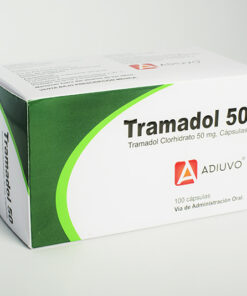
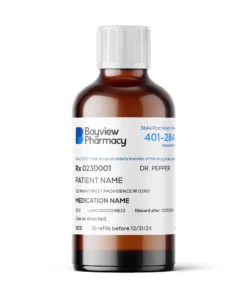



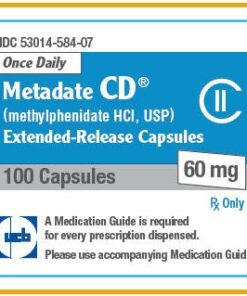
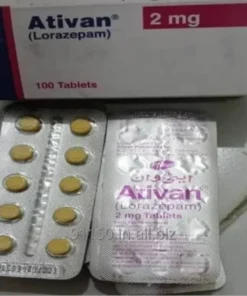
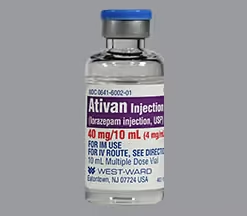



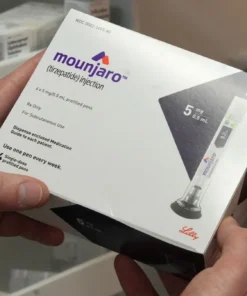
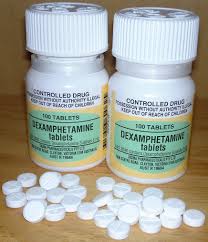
Reviews
There are no reviews yet.